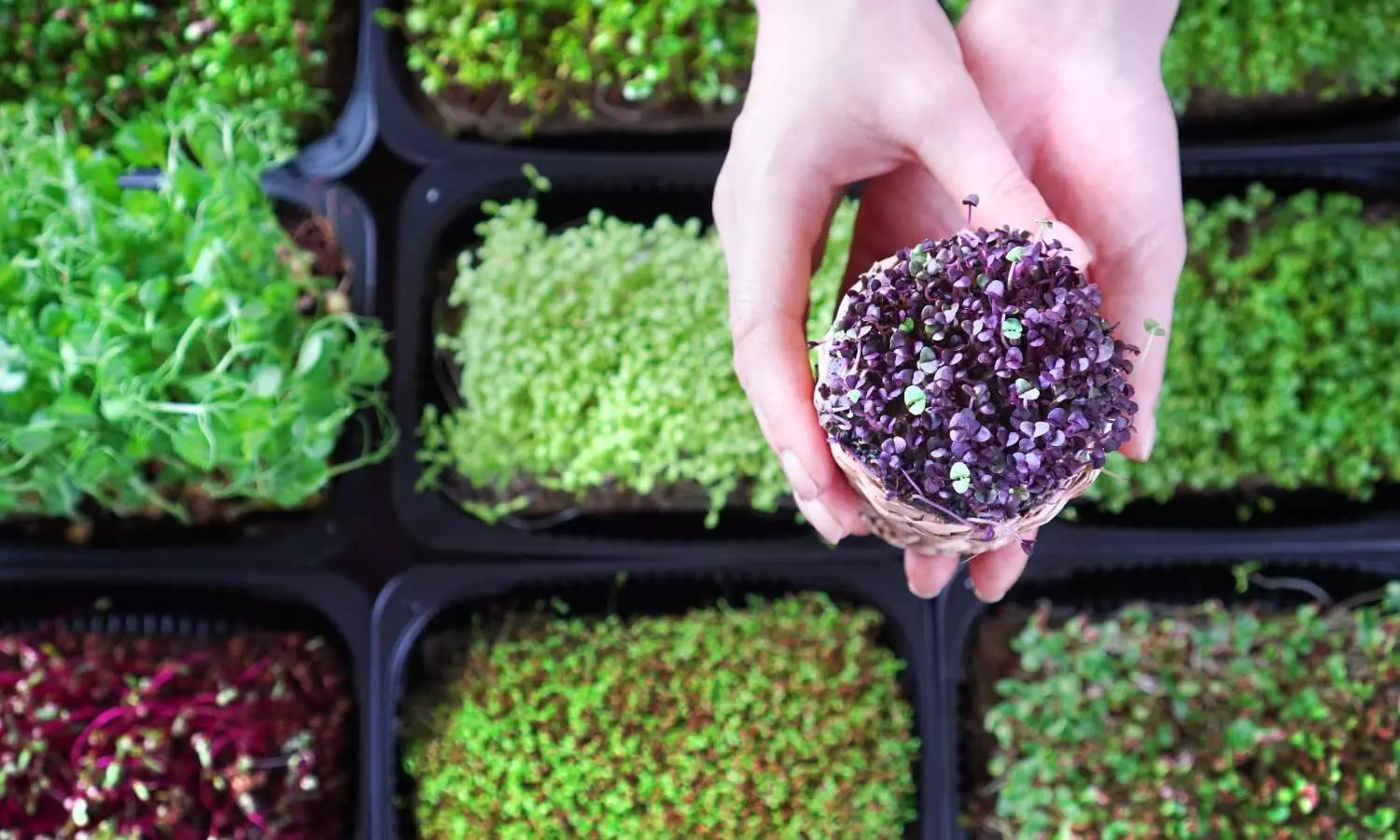Why You Should Include Microgreens in Your Diet?

Microgreens are young, tender plants of herbs, vegetables, or even grains that are harvested when they have just one to two sets of leaves. Typically, these small are ready for harvest within a week to ten days after sowing the seeds, making them a quick and accessible source of nutrition. Despite their size, microgreens are packed with nutrients and have emerged as functional foods due to their potential health benefits.
Microgreens contain high concentrations of essential nutrients, including amino acids, fatty acids, vitamins, minerals, and antioxidants. These young plants contain higher levels of these nutrients compared to their mature counterparts, which help combat oxidative stress and reduce the risk of chronic diseases. Additionally, specific microgreens, such as red cabbage and fenugreek, have been shown to improve heart health and manage blood sugar levels, respectively, making them a valuable addition to a healthy diet.
Nutritional Powerhouse
Microgreens are rich in essential nutrients, including amino acids, fatty acids, micronutrients, and various bioactive compounds and phytochemicals. These tiny plants contain higher concentrations of vitamins and minerals compared to their mature counterparts. For instance, microgreens are known to be high in aliphatic glucosinolates and polyphenols, compounds that contribute to their strong antioxidant capacity. Research has shown that microgreens can be significant dietary carriers of naturally occurring antioxidants, which help combat oxidative stress in the body and can prevent various chronic diseases.
Health Benefits of Microgreens
Some popular microgreens include amaranth, basil, mustard, peas, parsley, beet, coriander, broccoli, and celery. Each of these microgreens offers unique health benefits due to their specific nutrient profiles. For example, red cabbage microgreens have been shown to favorably modulate lipid profiles, making them beneficial for heart health. Fenugreek microgreens have demonstrated anti-diabetic activity, offering potential benefits for managing blood sugar levels. These properties make microgreens an attractive addition to the diet for their preventive health benefits.
Uses of Microgreens
Microgreens are versatile and can be easily incorporated into various dishes. They can be used in salads, soups, sandwiches, and minimally processed dishes to enhance flavor, texture, and nutritional value. This versatility makes it easy to include microgreens in everyday meals, boosting their nutritional content effortlessly.
Growing Microgreens
The growing interest in microgreens is not just due to their health benefits but also their ease of cultivation. They can be grown indoors or outdoors, in small spaces, and require minimal resources. This makes them accessible for home gardeners and urban dwellers who may not have access to large gardening spaces. Moreover, their quick growth cycle means that fresh microgreens can be harvested regularly, ensuring a continuous supply of these nutrient-dense plants.
Conclusion
In conclusion, microgreens are an excellent addition to a healthy diet. Their high nutrient content and potential health benefits make them an ideal food choice for those looking to enhance their nutritional intake. Whether added to salads, soups, or used as garnishes, microgreens offer a simple yet effective way to boost the nutritional quality of meals. Their ease of growth also makes them an accessible option for anyone interested in gardening, regardless of space constraints. With ongoing research highlighting their benefits, microgreens are poised to become a staple in healthy eating practices.


